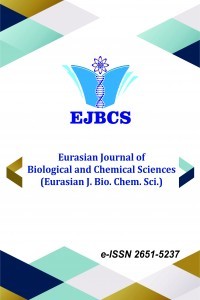Technological importance of asteroid mining
Technological importance of asteroid mining
asteroid mining, asteroid categories, REEs, technology, metals, C-type, S-type, M-type, PGMs NEAs, valuable asteroids,
___
- Badescu V. 2013. Asteroids: prospective energy and material resources, Springer-Verlag Berlin Heidelberg.
- Binzel RP, Farinella P, Zappala V, Cellino A. 1989. Asteroid rotation rates-distributions and statistics. IN: Asteroids II; Proceedings of the Conference, Tucson, AZ, Mar. 8-11, 1988 (A90-27001 10-91). Tucson, AZ, University of Arizona Press, 1989, p. 416-441.
- Blutstein K, Przylibski TA, £uszczek K. 2018. Zawartość minerałów FeNi w chondrytach H jako wskaźnik zasobności pozaziemskich skał rudonośnych w wybrane metale Concentration of FeNi minerals in H chondrites as an indicator of extraterrestrial ore-bearing rocks wealth in selected metals Przeglad Geologiczny, 66(12):776-784.
- Brenan JM, McDonough WF. 2009. Core formation and metal–silicate fractionation of osmium and iridium from gold. Nature Geoscience, vol 658:798–801.
- Brownlee D, Tsou P, Aléon J, Alexander CM O'D, Araki T, Bajt S, Baratta GA, Bastien R, Bland P, Bleuet P. 2006. Comet 81P/Wild 2 Under a Microscope. Science 314(5806):1711-6.
- Bus SJ, Binzel RP. 2002. Phase II of the small main-belt asteroid spectroscopic survey. A Feature-Based Taxonomy. Icarus 158(1):106-145.
- Calla P, Fries D, Welch C. 2018. Asteroid mining with small spacecraft and its economic feasibility. Acta Astronautica, eprint arXiv:1808.05099.
- Cohen M. 2007. Networks of absolute calibration stars for SST, AKARI, and WISE. The Future of Photometric, Spectrophotometric and Polarimetric Standardization, ASP Conference Series, vol.364:333-353.
- Haxel GB, Hedrick JB, Orris GJ. 2002. Rare earth elements—critical resources for high technology. U.S. Geological Survey Fact Sheet 087-02.
- Hellgren V. 2016. Asteroid mining: A review of methods and aspects. B.S. thesis, Lund University.
- Lauretta DS, Barucci MA, Bierhaus EB, Brucato JR, Campins H, Christensen PR, Clark BC, Connolly HC, Dotto E, Dworkin JP. Emery J, Garvin JB, Hildebrand AR, Libourel G, Marshall JR, Michel P, Nolan MC, Nuth JA, Rizk B, Sandford SA, Scheeres DJ, Vellinga JM. 2012. The OSIRIS-REx mission — sample acquisition strategy and evidence for the nature of regolith on asteroid (101955) 1999 RQ36. Asteroids, Comets, Meteors 2012, Proceedings of the conference held May 16-20, 2012 in Niigata, Japan. LPI Contribution No. 1667, id.6291.
- Norton OR. 2002. The Cambridge encyclopedia of meteorites. Cambridge, UK: Cambridge University Press. pp. 374. ISBN 0521621437.
- O'Leary B. 1977. Mining the Apollo and Amor asteroids. Science 197, no. 4301 (1977): 363-66.
- Rubin AE, Grossman JN. 2010. Meteorite and meteoroid: New comprehensive definitions. Meteoritics & Planetary Science, 45: 114-122.
- Tholen DJ. 1984. Asteroid Taxonomy From Cluster Analysis Of Photometry. Ph.D. Thesis, University of Arizona, Tucson, 1984, 166 pp.
- Welch C, Yi S, Lasslop A. 2010. Asteroid mining technologies roadmap and applications (ASTRA). International Space University Space Studies Program 2010 Graffenstaden-France.
- Yayın Aralığı: Yılda 2 Sayı
- Başlangıç: 2018
- Yayıncı: Muhammet DOĞAN
Elif DELİKTAŞ, Yusuf YAVUZ, Savaş KOPARAL
Technological importance of asteroid mining
Nanoteknoloji Uygulamalarında Hayatımıza Yansımalar
Beyza Sultan AYDIN, İbrahim BULDUK
Hatay İli Reyhanlı-Kumlu Bölgesi Topraklarının pH, Kireç ve Organik Madde İçeriklerinin Belirlenmesi
Investigation of extraction method effect on yeast beta glucan production
Fatma KARSLIOĞLU, Suna ERTUNÇ, Zeynep YİLMAZER HİTİT, Bülent AKAY
